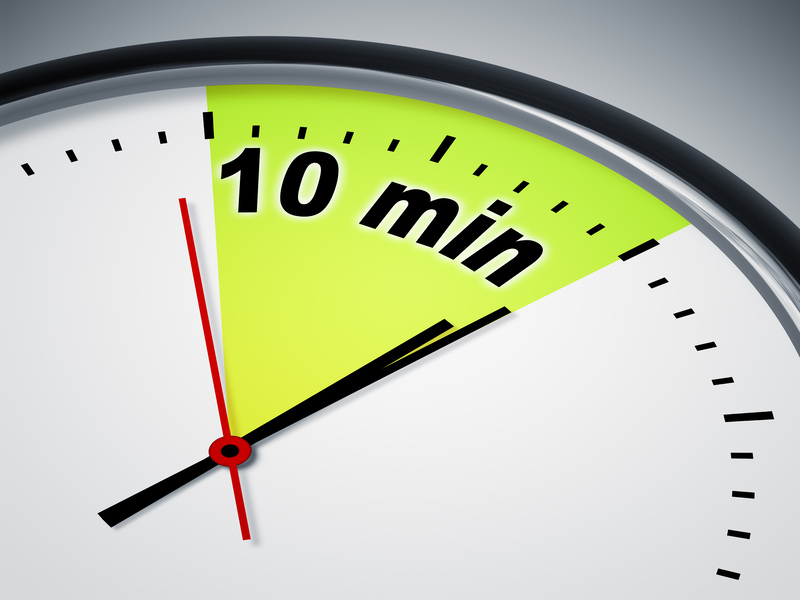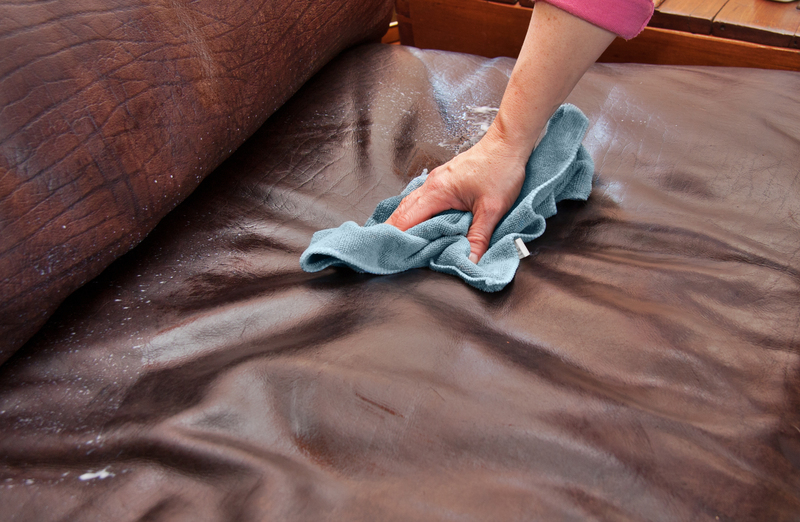Navigate Your Move Out: Guide to End of Tenancy Cleaning for Tenants
Posted on 14/08/2025
Navigate Your Move Out: Guide to End of Tenancy Cleaning for Tenants
Moving out can be a stressful process, filled with checklists, packing, and a rush to get everything done on time. One essential task not to overlook is end of tenancy cleaning. This comprehensive guide will walk you through everything you need to know about end of tenancy cleaning for tenants to help you secure your deposit and leave your landlord satisfied. Whether you're a first-time renter or an experienced tenant, this resource is designed to ensure a smooth transition as you hand back the keys.
What Is End of Tenancy Cleaning?
End of tenancy cleaning refers to a thorough deep clean conducted just before a rental property is vacated. The objective is to restore the home to its pre-let condition, making it presentable for new tenants and ensuring that you fulfill your obligations as outlined in your rental agreement. Neglecting this critical step can lead to deductions from your deposit or even disputes with your landlord or letting agency.

Why Is Move-Out Cleaning Important for Tenants?
- Deposit retrieval: The most common reason for deposit deductions is insufficient cleaning.
- Lease agreement compliance: Most tenancy contracts contain clauses mandating a professional-standard clean upon departure.
- Respect for new tenants: Thorough cleaning creates a welcoming environment for new inhabitants and maintains your good rental history.
- Reputation preservation: Leaving a property in pristine condition ensures positive references from landlords or agents for future rentals.
In short, investing time and effort into moving out cleaning helps you avoid conflicts, ensures fairness, and keeps your rental record spotless.
Understanding Your Tenancy Agreement
Before diving into your final cleaning, revisit your tenancy agreement. This document often outlines cleanliness standards and may specify requirements, such as:
- Professional carpet or upholstery cleaning
- Deep oven degreasing
- Thorough window cleaning (inside and out)
If your lease requires a professional end of tenancy clean, you may need to show receipts or invoices. Always clarify these expectations with your landlord or letting agent to prevent misunderstandings.
DIY vs. Professional End of Tenancy Cleaning
DIY Cleaning: Pros and Cons
- Pros: Cost-effective, flexible scheduling, direct oversight
- Cons: Time-consuming, may lack professional tools or solutions, risk of missing hidden areas
Professional Cleaning: Pros and Cons
- Pros: High-standard cleanliness, efficient, meets most tenancy agreements
- Cons: Added expense, requires advance booking
Tip: Even if you hire a professional, do a walk-through to ensure their service meets required standards. Always retain your receipt for proof if requested by the landlord or agent.
Comprehensive End of Tenancy Cleaning Checklist
To help you organize the process and leave nothing overlooked, here is a detailed end of tenancy cleaning checklist:
General Areas
- Dust and wipe down all surfaces, including skirting boards, light switches, and door frames
- Vacuum carpets, rugs, and upholstery; consider steam cleaning if heavily soiled
- Mop hard floors
- Wash windows, frames, and sills (inside and outside if accessible)
- Wipe radiators and remove cobwebs from ceilings
- Clean light fixtures, switches, and sockets
- Empty bins and wipe them down
Kitchen
- Degrease oven, hob, and extractor fan thoroughly
- Clean and defrost fridge/freezer; remove all food and wipe shelves
- Sanitize sinks, taps, and drainers
- Scrub countertops, cabinets (inside and out), and backsplashes
- Check and clean dishwasher, washing machine, and microwave
- Empty cupboards and remove liners or crumbs
Bathrooms
- Scrub and disinfect toilets, sinks, showers, and bathtubs
- Descale shower screens, taps, and tiles
- Wipe mirrors, shelves, and cupboards
- Clean extractor fans and vents
- Replace empty toilet rolls and ensure fixtures are clean
Bedrooms and Living Areas
- Dust and wipe furniture, wardrobes, and shelves inside and out
- Check and clean under beds and behind furniture
- Vacuum mattresses and spot-clean stains
- Remove all personal belongings and rubbish
By using a checklist, you can confidently tackle your end of lease cleaning without missing crucial details.
Room-By-Room Cleaning Tips for a Flawless Finish
How to Deep Clean Your Kitchen
The kitchen is one of the most scrutinized areas during inspections. To impress your landlord, follow these tips:
- Oven: Use a strong degreaser or baking soda-vinegar paste. Don't forget oven racks and trays.
- Fridge/Freezer: Defrost at least 24 hours before moving. Clean inside and behind appliances.
- Extractor Fans: Remove and soak filters in hot soapy water.
- Cabinets: Empty completely and wipe inside, including handles and hinges.
Bathroom Grime Removal
- Address mold with a bleach solution or anti-mold spray.
- Use descaler on taps and glass for sparkling results.
- Polish mirrors for a streak-free shine.
Carpet and Upholstery Care
Stained carpets and furniture are common reasons for withheld deposits. Rent a carpet cleaner if needed, or spot-treat stains promptly. If your lease states professional cleaning is required, be sure to hire a reputable service.
Windows: The Unsung Heroes of Cleanliness
Streak-free windows let in more light and make rooms look well-cared-for. Clean inside and outside (where possible), and check for grime in frames and tracks.
Expert Tips for Successful End of Tenancy Cleaning
- Start early: Don't wait until moving day. Begin cleaning one room at a time as you pack.
- Take photos: Document the property after cleaning to have proof of the condition.
- Repair small damages: Replace light bulbs, fill nail holes, and tighten loose fittings.
- Reference your inventory: Cross-check with the move-in inventory to ensure all items and conditions match.
Items Often Missed During End of Tenancy Cleaning
Don't let these overlooked areas be the reason your deposit is docked:
- Behind appliances (fridge, washing machine, oven)
- Inside cabinets and drawers
- Extractor fans and filters
- Light fittings and lampshades
- Tile grout and bathroom corners
- Picture rails and skirting boards
- Window tracks and seals
What to Expect During the End of Tenancy Inspection
After moving out, landlords or agents will perform a detailed inspection. They'll compare the property's state to the original inventory and note disparities. Unclean areas, stains, and damages may result in deposit deductions.
- Attend the inspection if possible, to address questions or disputes on the spot.
- Bring your cleaning receipts (if professional services were used).
- Share your before-and-after photos if your landlord raises any issues.
When Should You Book a Professional End of Tenancy Clean?
- If your agreement requires professional cleaning
- If the property is large or heavily soiled
- If you lack time, resources, or cleaning supplies
- If you need a receipt for proof of work
Look for companies with positive reviews, transparent pricing, and satisfaction guarantees. Request a detailed cleaning checklist from the service to ensure all standards are met.
How Much Does End of Tenancy Cleaning Cost?
Costs vary based on property size and level of cleaning required. On average:
- One-bedroom flat: ?100-?200
- Two-bedroom property: ?150-?250
- Larger homes: ?250 and above
Specialized treatments (carpets, upholstery, or ovens) may incur extra charges.

Frequently Asked Questions
Do I Actually Have to Clean if I Used a Cleaning Service?
If you've booked a move-out cleaning company, check their final report to ensure compliance with your landlord's requirements. Always keep receipts, and don't forget to do a final walk-through.
What Happens if the Property Isn't Clean Enough?
If the final inspection reveals unsatisfactory cleaning, the landlord may arrange additional cleaning and deduct the cost from your deposit. Proactive communication and proof of your efforts can help you contest unfair claims.
How Much Time Should I Reserve for End of Tenancy Cleaning?
Depending on the property size, allocate at least one full day for thorough cleaning. Larger properties may require several days--especially if tackling everything yourself.
Can I Use My Own Cleaning Products?
Yes, but ensure they are suitable for the surfaces in your property. Avoid harsh chemicals that could cause staining or damage.
Conclusion: Set Yourself Up for a Smooth Move-Out
End of tenancy cleaning for tenants is more than a checklist--it's your ticket to peace of mind and a full deposit refund. By planning ahead, referencing your tenancy agreement, and working methodically, you can turn the daunting task of move-out cleaning into a manageable and rewarding process. Whether you opt for a DIY approach or hire professionals, your effort sets the stage for a hassle-free move and strong rental references.
Ready to move? Use this guide to navigate your move out, clean your rental like a pro, and leave on the best terms possible!




